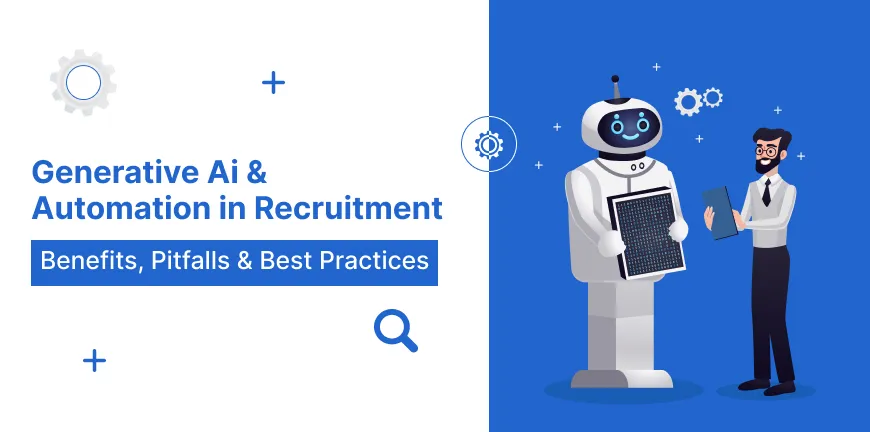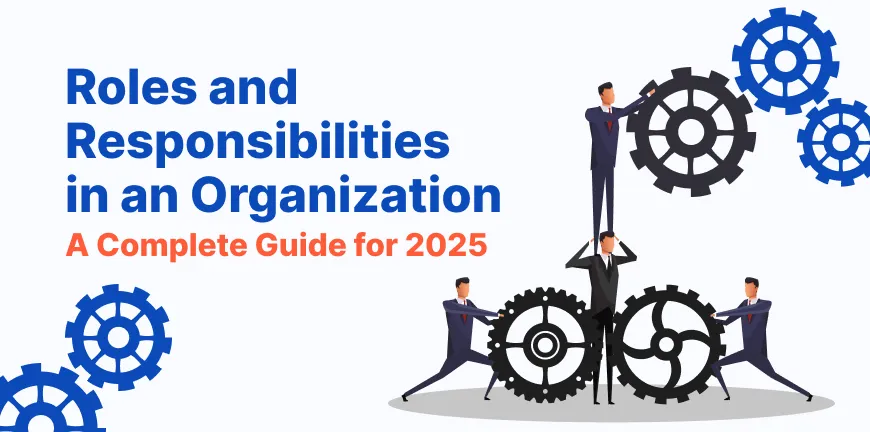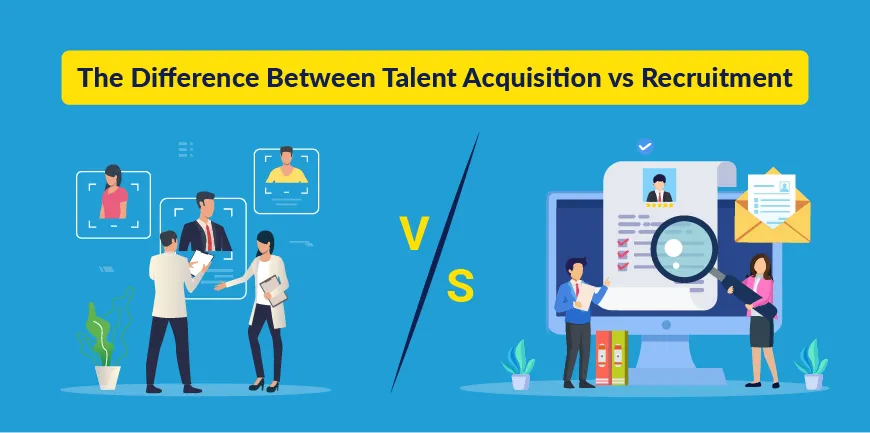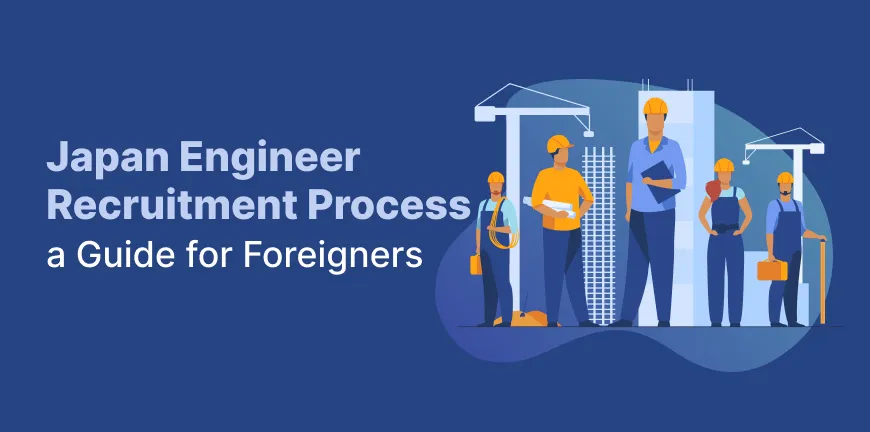
Employment Laws in India 2025: Essential Rights Every Employee Must Know
27/10/2025
20 Great Exit Interview Questions You Need to Ask
27/10/2025Talent acquisition today has transformed and travelled beyond your old manual resume screenings and multiple rounds of interviews. It is a talent-powered market stirring up the storm, and Generative AI and automation are the engines revolutionizing how enterprises draw, evaluate, and recruit candidates. These modern tools are making the lives of recruiters smooth as they are assisting them in designing personalized job descriptions to automating and hastening shortlisting. AI-enabled recruitment tools are undoubtedly promising, but they bring along obstacles and challenges that need to be dealt with cautiously.
Research suggests that by 2030, it’s estimated that 75% of recruiters will adopt automation in recruiting, significantly improving hiring efficiency.
Let us check out the various facets of AI in recruitment:
Defining Generative AI in Recruitment
Generative AI entails AI systems and tools that can generate new content, which is based on training data. Based on training data. In the hiring context, it refers to AI tools that can generate customized job descriptions, messages, and interview questions, among other applications. Automation in hiring refers to procedures like interview scheduling and CV screening that are getting automated, thereby speeding up the hiring system. These modern technologies are making the recruitment processes smarter, faster, and efficient.
Vital Advantages of Generative AI & Automation in Recruitment
1. Agility and Effectiveness
AI-enabled systems can manage multiple applications in very little time. This enables recruiters to hire fast and reduces the work pressure drastically. HR teams can now focus on tasks that are of high priority, like intelligent manpower planning, organizing interviews, building relationships, etc.
2. Enhanced Candidate Journey
HR teams and recruiters utilizing Generative AI can benefit immensely, as the system creates and sends highly personalized messages, and the tone and language hit the right chords with candidates. The communication in every stage of hiring becomes smooth and effective, making candidates happy.
3. Enhanced Job Descriptions
The job postings by companies leveraging Generative AI are well-crafted, devoid of bias, and optimized by SEO, which facilitates companies to reach out to a broader talent base, attracting diverse professionals. Recruiters can utilize AI information to make revisions in job titles, descriptions, and skills by adding finesse.
4. Fair Candidate Evaluation
Recruiters, while hiring, can now make hiring decisions objectively with AI systems in place. By utilizing an organized data structure and machine learning devices, recruiters can hire wisely. The AI-powered systems assess candidate profiles using a standard format, focusing on actual skills and potential, fostering a bias-free and positive approach.
5. Evidence-Based Analysis
The method of using predictive analytics by recruiters has gained momentum as these AI-driven insights can assess manpower behaviour, historical information, market trends, point out departmental errors, forecast future work patterns, etc. With the fact-based information, recruiters can make smart decisions while taking workforce-centric decisions.
Use Case- Leading global hospitality giant Hilton used talent analytics and predictive modelling to identify traits and experiences correlated with success in their customer-facing roles. The result was remarkable, marking a reduction in turnover. Figures suggest a 50% reduction.
Challenges and Ethical Risks
Every effective phenomenon comes with its own advantages and disadvantages. While the advantages are clear, Generative AI in hiring also has its own risks. Let us look at some of them:
1. Amplify Bias
AI models are trained differently, and if they receive training on historical data can adversely affect the hiring process. It can duplicate or even increase existing biases. It can be a problem if the past recruitment decisions favoured a certain section of people or demographics. The model could pick up that pattern and apply it in the future.
2. Limited Human Involvement
Automated processes can structure systems, expedite hiring procedures reduce workload, but there is one thing missing that is the personal human intervention. It is essential to consider the human aspect in hiring. It is vital for team and relationship building, enhancing candidate experience, and catering to specific job requirements.
3. Data Handling Risks
AI-backed tools use the personal data of candidates and employees. The data is sensitive and needs to be protected. Recruiters and organizations are required to comply with certain regulations and laws that safeguard the data. They must discuss with the concerned people before acquiring data and keep the process transparent and efficient.
4. Extreme Trust in Algorithms
It is imperative for organizations that they are not fully dependent on AI algorithms. This might lead to inefficient hiring, as blindly trusting AI recommendations without scrutinizing them will result in increased biases. Selected candidates might fail to meet the cultural goals once they join a company, as they were hired based on some algorithm.
5. Accountability and Transparency
There can be an issue of not being able to explain to candidates why they were rejected, as sometimes AI systems can turn down candidates without any justification, as they run on a mechanism that is influenced by AI-driven tools.
Best Methods to Use AI & Automation in Recruitment
The AI experience will be complete and fulfilling only if it is utilized responsibly, bringing together elements that uplift the hiring procedure.
1. Define Clear Objectives
It is important to first understand and formulate structures to which AI will be applied. It can be used to automate manual and repetitive tasks. It can be used to identify potentially skilled talent, the talent that might not be found otherwise.
2. Ensure High Quality Data
AI models are designed according to the training they receive. They work according to the database they have been provided with. So the data sets provided to them must be of good quality and up to date.
3. Ensure Human Intervention
The ultimate control should be with humans when it comes to making final decisions, although it is assisted by AI systems. AI systems can fasten processes and organize systems, but the final accountability must be that of a human being for a fair and impactful recruitment process.
4. Conduct Regular AI Checks
AI systems keep evolving with changing trends, data, etc., so there is a constant need for performance reviewing. This can be done by putting audit systems in place and maintaining a fair and square hiring process.
5. Offer Recruiter Development Training
You need to prepare your HR and recruitment teams to be well-versed with AIO-backed tools and systems. You must offer training programs that offer expertise in how to operate AI systems and their pros and cons.
6. Prioritize Focused Approach.
To improve the experience of candidates and enhance engagement, companies must focus on using AI systems like chatbots for immediate response, but keep the complicated queries for humans. AI tools can send customized updates during lengthy recruitment processes.
The Future of Generative AI in Recruitment
As the recruitment technologies change, and the new wind of the hiring technology is all set to blend elements like predictive analytics, soft skills like EQ, and skill-centric hiring, we are eventually switching from conventional CV-based assessments.
The recruiters who will succeed are those who keep pace with the dynamic Generative AI landscape, as it will keep transforming and, with it, will transform job scenarios, offering real-time information and catering to the growth of an organization.
Trends and Statistics on Generative AI & Automation in Recruitment in 2025
| Category | Statistic | Source |
| Adoption Rate | 87% of companies use AI in recruitment | Ai Techtonic |
| Recruiter Usage | 65%+ of recruiters use AI daily | Ai Techtonic |
| Time Savings | AI can reduce time-to-hire by up to 40%. | DemandSage |
| Cost Reduction | AI can cut hiring costs by up to 30% per hire. | DemandSage |
| Market Value (2023) | The AI recruitment industry is valued at $661.56 million. | DemandSage |
| Projected Market Value (2030) | Expected to reach $1.12 billion by 2030, growing at a CAGR of 6.78%. | DemandSage |
| Benefits Reported by Recruiters | 44% cite time savings; 58% leverage AI for improved candidate sourcing. | Ai Techtonic |
| Candidate Concerns | 66% of U.S. adults would hesitate to apply for jobs screened by AI. | DemandSage |
| Bias in AI Systems | AI models may favor male candidates, especially for higher-wage roles, indicating gender bias. | arXIV |
| Global Adoption Trends | Adoption rates vary, with Australia at 30% in 2025, expected to grow. | The Guardian |
| Indian Market Shift | 75% of Indian recruiters allocate up to 70% of hiring budgets to AI-driven tools. | The Economic Times |
Generative AI is rewriting history by revolutionizing hiring methods, making it swifter, smarter, and smoother. However, organizations that will succeed must follow certain steps, like responsible adoption and execution of AI, adhering to ethical practices, and a great dose of human touch.AI and automation are innovative recruiters new to town, so they will require human help in every step they take.




